Weekly recap — 7 November 2023
by Alexandre ProkoudineAudacity 3.4 comes with musical time and easy audio stretching

Week highlights: new major releases of Audacity, BlenderBIM, SpectMorph, new features in GIMP.
Edited transcript of the video goes below.
GIMP
Jacob Boerema added support for 16- and 32- bit per channel DDS files in GIMP, which should make quite a few game designers happy. Tiios patch is already in the main development branch, so it will be part of the next release.
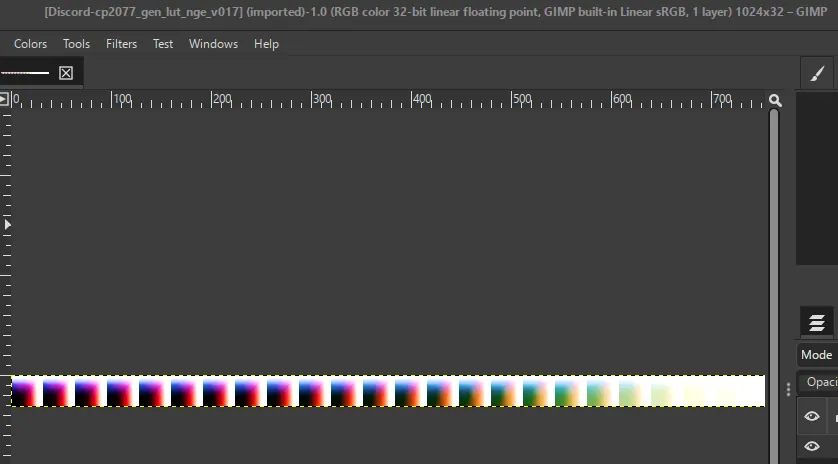
Cassidie Grogan submitted a patch that updates the existing DICOM files viewer to use the GDCM library. DICOM files are commonly used to store CT, MRI, X-ray, and ultrasound scans. The plugin that GIMP currently has is all custom code written a loooong time ago. So the plugin would fail to open many files created more recently. I personally ran into this bug years ago when I tried to open my CT scans and utterly failed.
This patch by Cassidie fixes that as you can see from the file that another user reported as unsupported. The switch to the GDCM library for loading DICOM files is great.

However, you will notice that the rendering doesn’t look right, especially when compared to the way the same file is rendered in specialized software:
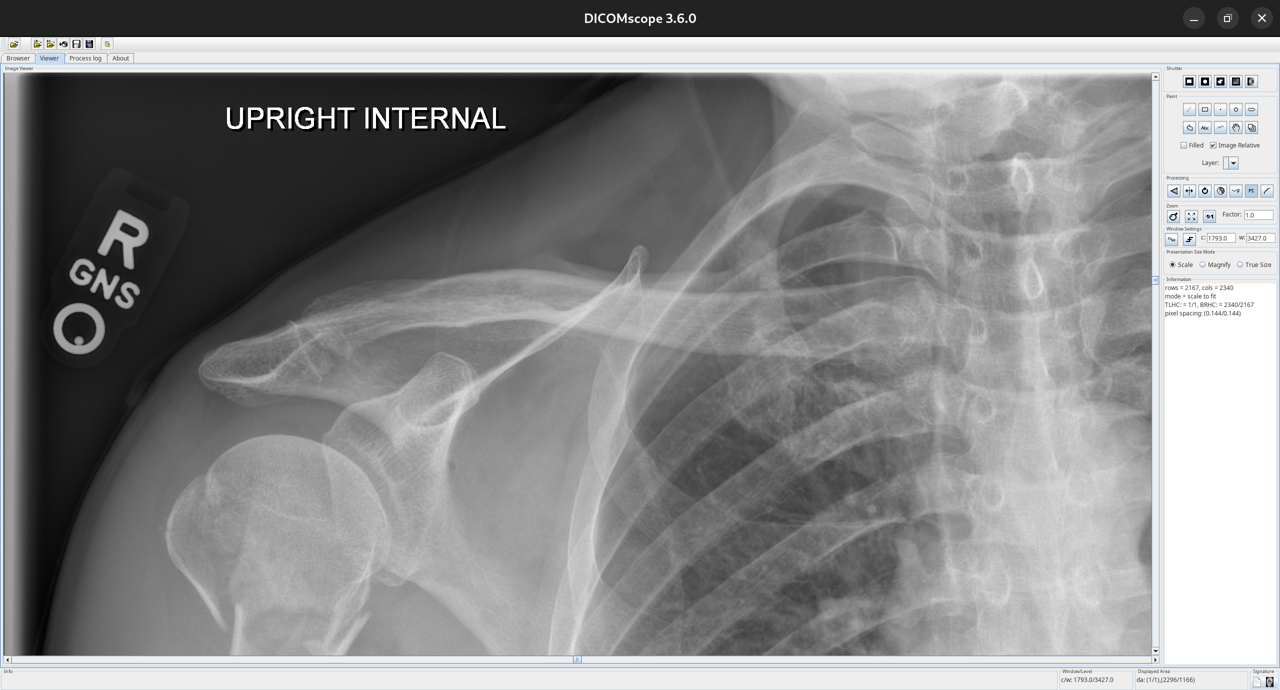
You can fix that with curves, but that’s not really how it’s supposed to work. Medical scans are used in life-and-death situations, you don’t want your software to do funky stuff with them. I would really love to report that, but alas, GNOME’s Gitlab doesn’t let me in after recovering the password. So I guess I’ll find a different way to pass the word.
BlenderBIM v0.0.231104
The new version of BlenderBIM comes with support for Blender 4.0. They also extended MEP tools to create bends for circular and rectangular profiles, which should really come in handy.
The team also added support for creating tabular data that conforms to COBie standards which are used for exchanging data about assets and equipment.
More work has been done on user interface improvements. The active drawing settings interface has been moved from the Camera tab into the Drawings and Documents tab. The settings to change drawing size have also been redesigned. There is also a new placement panel in the Geometry and Materials tab to set all coordinate, rotation, and derived coordinate data in one place.
And there are beginnings of a new material and style system. Currently you can add and edit shading and rendering styles and associate and unassociate styles to materials. The idea is to eventually completely override the default Blender materials tab.
See here for more information.
Audacity 3.4
This version of Audacity comes with several new features.
The first one is musical time view. The basics of that feature were developed by a Google Summer of Code student in 2022, then the beta version of that feature was released this April in 3.3. Now it’s finally 100% functional.
Once you switch to Beats and Measures in the ruler, after recording new material or importing a file you will see a musical time grid on the timeline. And when you drag the clip around, it should be snapping to musical units.

There’s a bug here though. If you select 1/8th, it will only snap to 1/4th. And if you select 1/4th, it will only snap to half a bar. This bug has been reported.
The other new feature is easy stretching of audio clips. You just hover the clip bar, press the Alt key and start dragging left or right. It works very well, but I think I’d need to spend some more time with this to see if the claim about superior stretching quality is valid.
There’s some fun trivia here. The time-and-pitch library that Audacity uses for that originally comes from StaffPad, which is another software project now owned by Muse Group. It’s a proprietary application for writing score on tablets. Early on, when Audacity was acquired, there were some concerns that Muse Group would hide changes from the community, but as you can see they are actually doing the exact opposite.
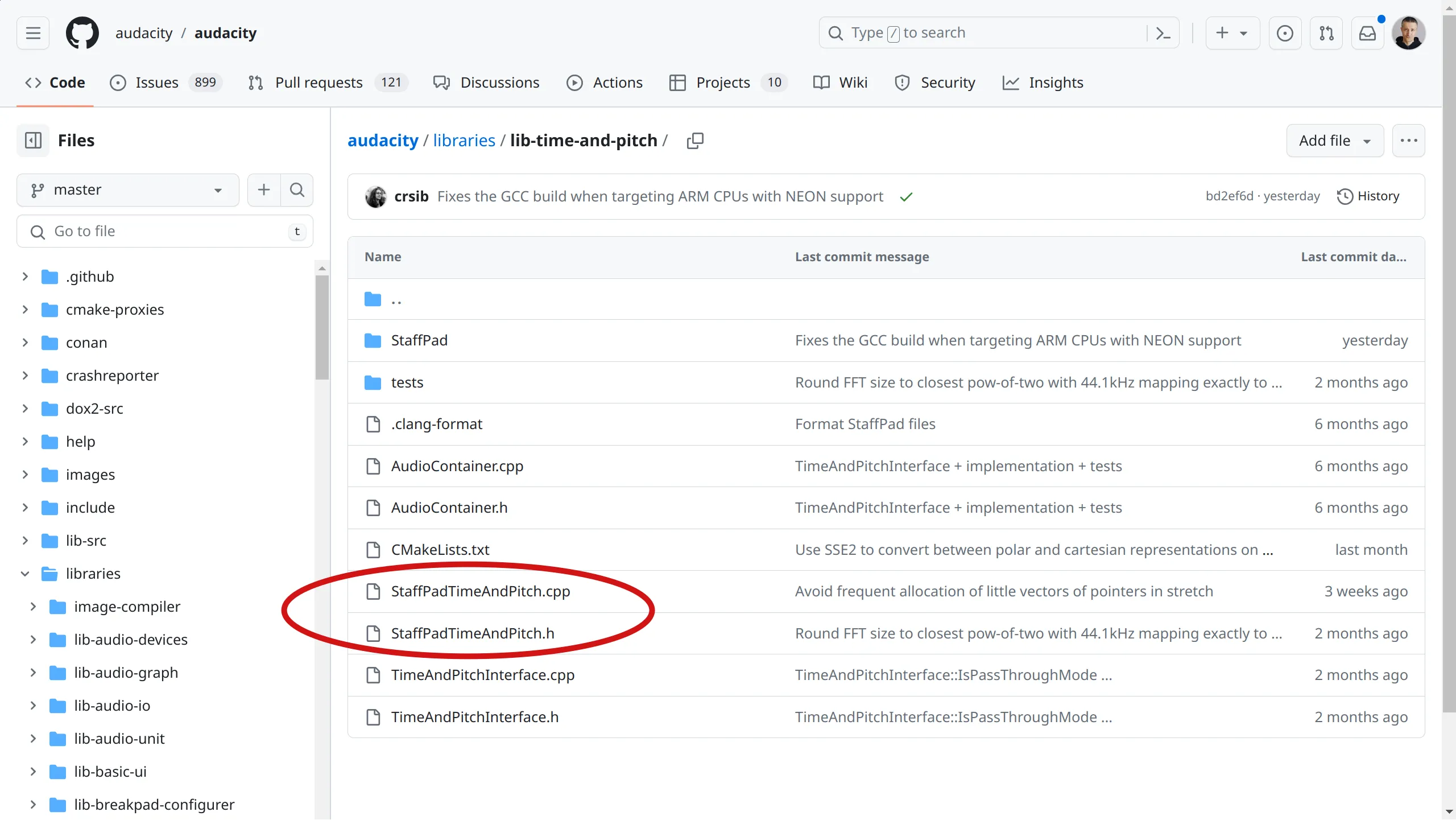
But that’s not even all the trivia. The time-and-pitch library uses an opensource fast fourier transformation library called pffft. Yes, pffft. If you look at its copyrights, one of the developers is Julien Pommier who is principal developer at Modartt, creators of the famous virtual instrument called Pianoteq.
Now, back to audio stretching. One interesting thing about the implementation is that Audacity keeps track of the project tempo, and when you change that tempo, audio clips get automatically stretched to match the new tempo and stay synced to the beat. You can see right in the clip bar.
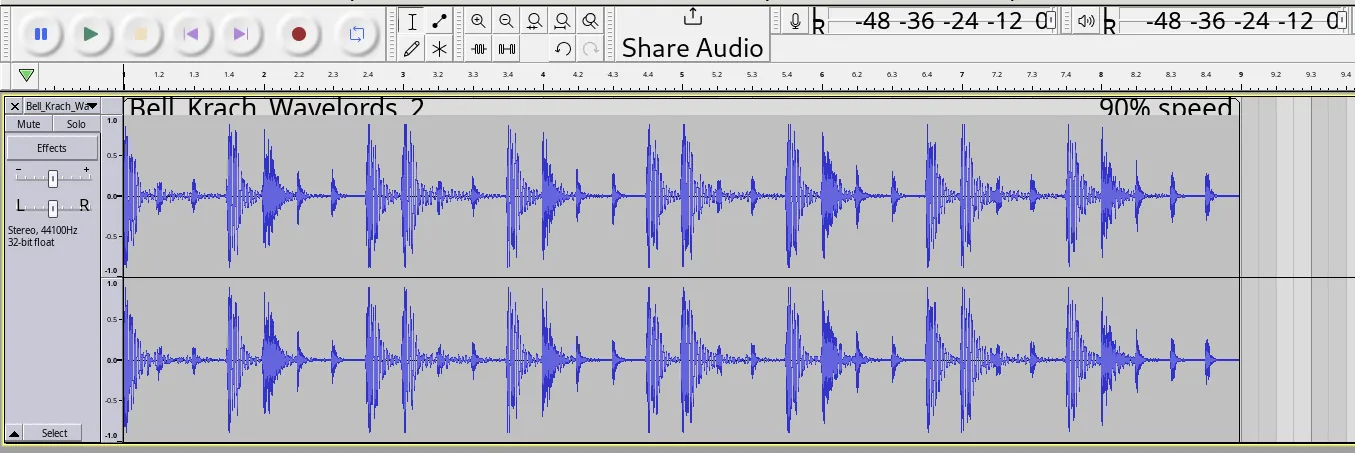
Finally, the Export Audio dialog has been updated. It’s cleaner, and you can do custom channel mappings. I’m not entirely certain this is sufficient for encoding 5.1, because I have virtually no experience mixing and mastering for film, but it’s here and you can use it.
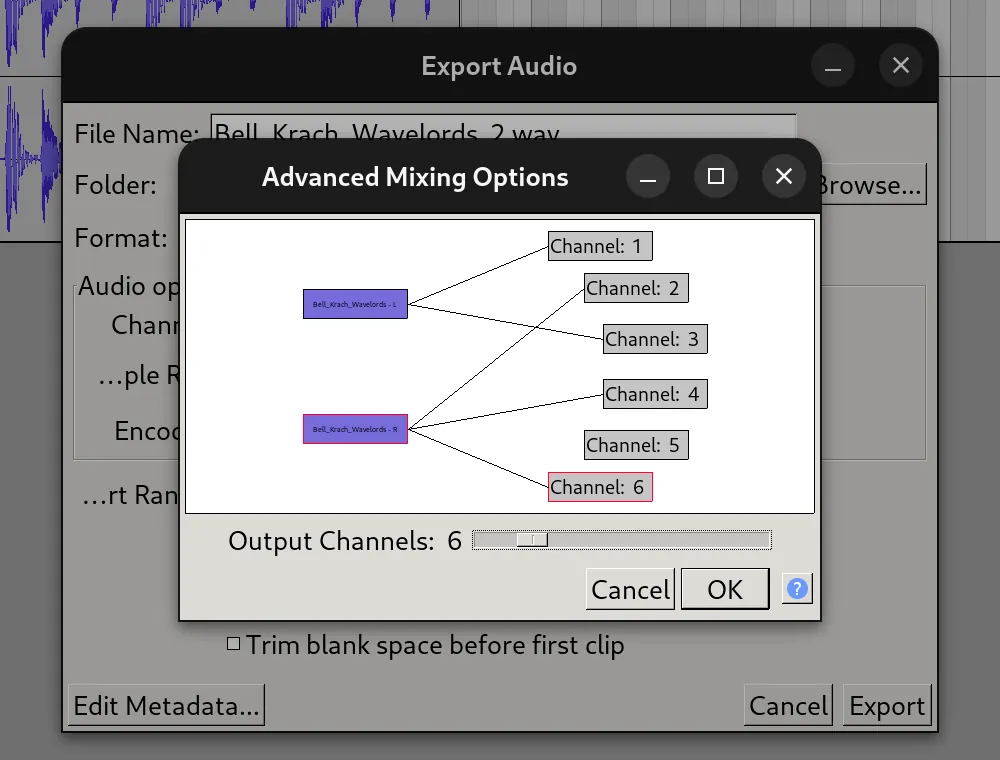
Unfortunately, Audacity still looks quite horrible on HiDPI displays. This is not going to be a problem for the Qt port though. Everything looks just right there, except it’s nowhere ready for even basic use.
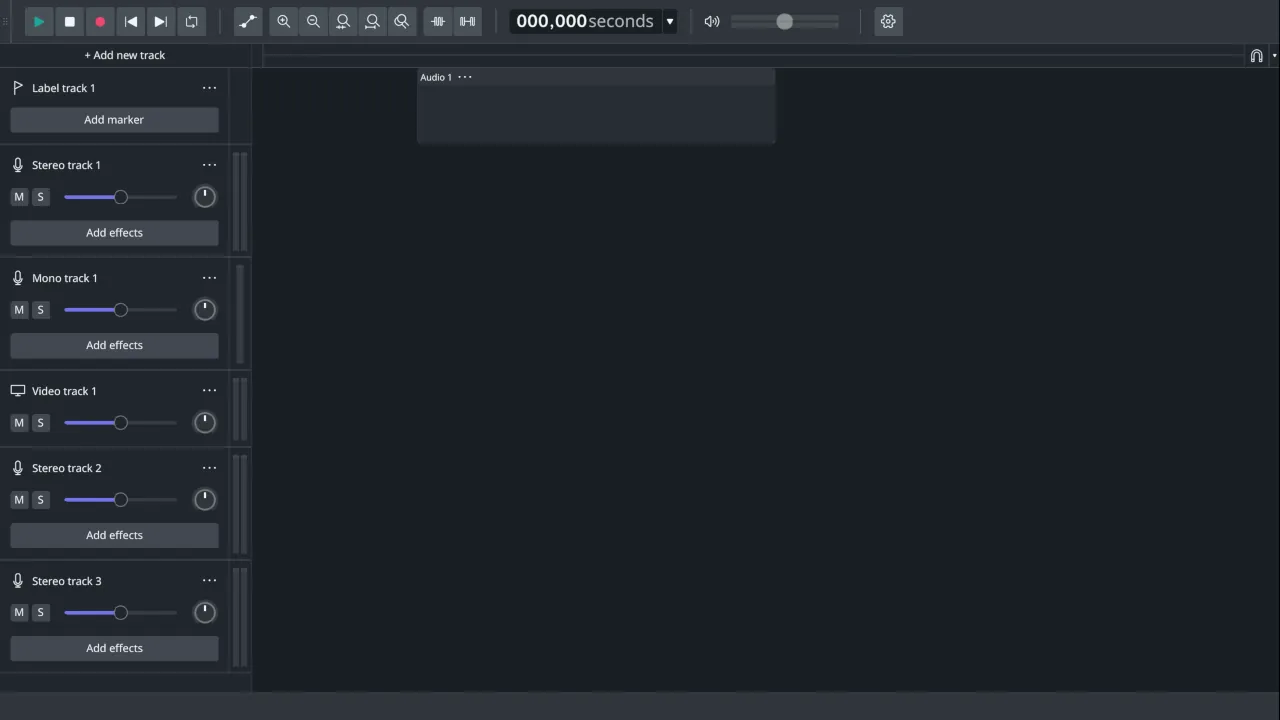
So I would say expect at least one or two more versions of Audacity 3 before we get to Audacity 4 and the Qt-based version with full UX/UI revamp.
SpectMorph 0.6.1
SpectMorph is a virtual instrument that allows morphing two instruments into a hybrid one. It’s tweakable, there are output settings (custom ADSR, filter, vibrato, portamento etc.). All in all, good fun, although I really feel like layering this over with a huge reverb like galactic. After all, anything sounds like a pad if you apply enough reverberation, doesn’t it? :)
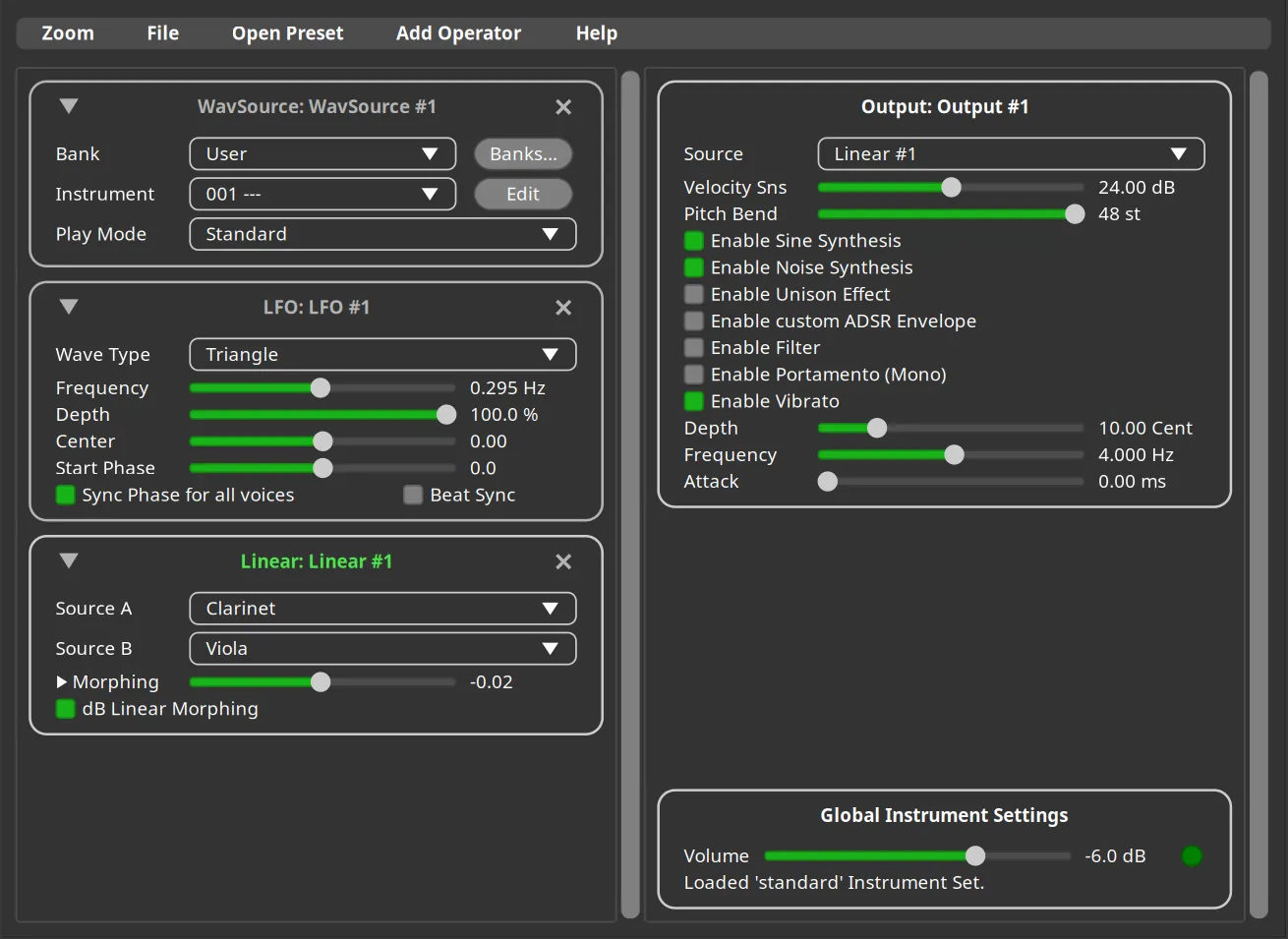
Changes in this release:
- Improvements in the instrument editor
- New instruments: bass flute, soprano saxophone, clarinet, bass clarinet, tenor trombone, viola, double bass (bowed)
- Various other improvements, e.g. support for multiple banks for WavSources / instrument editor
Windows, macOS, and Linux (DEB for Ubuntu) builds are available on GitHub.
Artworks
Cloud by Philipp Urlich (Krita):

The valley of waterfalls by Sad_Tea (Krita):

Moonlighter by clooms (Krita):

Portrait by Sophia Vasylyshyn (Krita, GMIC):

Patreon subscribers get early access to my posts. If you are feeling generous, you can also make a one-time donation on BuyMeACoffee.
